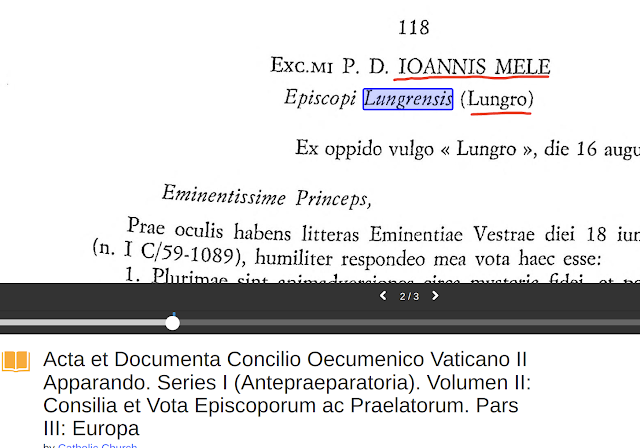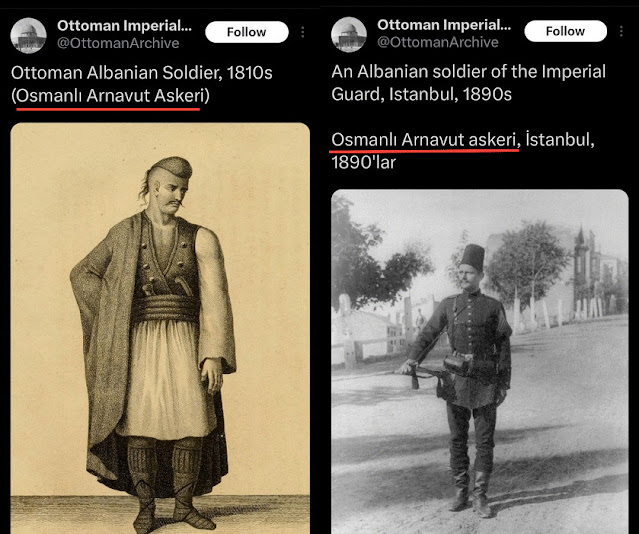Alberto Stratico: Albanians Came From The Caspian in the 11 Century - Stratico Shqiptaret Erdhen ne Shekullin e 11
Alberto Stratico was a Greek man from Lungro -Italy whose last name has Greek origins. Stratico comes from Στρατηγός. He was not Albanian.
Alberto Straticco was a teacher of literature at Lungro (Cosenza) a former colony of Hungarians hired by the Byzantines against the Lombards.
In ancient times, Lungro, was called Ungarum or Lungrium (which means the territory of the Hungarians)
(Alberto Stratico ishte një Grek nga Lungro-Italia, mbiemri i të cilit ka origjinë Greke. Stratico vjen nga Στρατηγός. Ai nuk ishte Shqiptar.
Alberto Straticco ishte mësues i letërsisë në Lungro (Cosenza), një ish-koloni hungareze e punësuar nga Bizantinët kundër Lombardëve.
Në kohët e lashta, Lungro quhej Ungarum ose Lungrium (që do të thotë territori i Hungarezëve)
While Italians were planning to invade Epirus, they started to spread disinformation that the population of Lungro was Albanian.
Lungro was always inhabited by Greeks.
(Ndërkohë që Italianët po planifikonin të pushtonin Epirin, ata filluan të shpifin qe popullsia e Lungros ishte Shqiptare. Lungro ka qenë gjithmonë i banuar nga Grekë).
The monasteries were Greek at Lungro and no mention of Albanians until 1919.
Eparchia Lungrensis was created only in the year 1919, after the creation of the Albanian State.
The Italian church started changing the names of the Greek priests to Italian names so they would not be recognized. The Greek Bishop Ioannis Mele, suddenly got his name changed to an Italian name Giovanni Mele and the Eparchia Lungrensis became "Albanian" with Greek priests.
(Eparchia Lungrensis u krijua vetëm në vitin 1919, pas krijimit të Shtetit Shqiptar. Kisha italiane filloi të ndryshojë emrat e priftërinjve Grekë në emra Italianë që ata të mos njiheshin. Peshkopit grek Ioannis Mele, ja nderruan emrin ne një emër italian Giovanni Mele dhe Eparchia Lungrensis u bë "shqiptare" me priftërinjtë Grekë)
Greek priests at Lungro (foto below). Prifterinj Greke ne Lungro
The rites were Greek at the churches of Lungro. Ritet fetare ne Lungro ishin Greke
Alberto Stratico a psychology teacher at Lungro, who was in contact with many Italian propaganda writers wrote a book in 1896, called "Manuale Di Letteratura Albanese" (Manual of Albanian Literature) promoted by the Albanian state and writers, who do not mention the Caspian region as the primary residence of the Albanians.
In this book, Alberto Stratico says that, Albanians came from the Caspian Sea, and started appearing in 11th century in the Balkans.
Stratico: “… During their stay in Asia, the Albanians, driven by the struggles sustained with other peoples or by other reasons, began to transmigrate towards the West in bits and pieces; except that, overshadowed by other more numerous and stronger peoples, historians did not begin to mention them until the 11th century, when it can be said that they disappeared from the Caucasus..."
Stratico: "… The first nucleus of Albanians in Europe appeared in the peninsula of Acte, which goes from Mount Athos to the Aegean Sea, as noted by Thucydides and Herodotus Many others came afterward, led by Darius, after the defeat of Arbela, in the villages behind Macedonia, others came with the Persians to war with the Greeks; and then others followed suit, invading the Redope Mountains, Thrace, and Illyria…”
Stratico: "…At the end of the wars, they then appeared constituted in the form of tribes, passed from one State to another with the natural speed of the Scyptari, and finally appeared in most important aggregates on the Acrocerauni mountains and near Durres, and subsequently in the southernmost parts, occupying the territories of modern Albania…”
(Alberto Stratico, mësues i psikologjisë në Lungro, i cili ishte në kontakt me shumë shkrimtarë të propagandës italiane, shkroi një libër në vitin 1896, të quajtur "Manuale Di Letteratura Albanese" (Manuale e Letërsisë Shqipe) të promovuar nga shteti dhe shkrimtarët shqiptarë, të cilët nuk përmendin Kaspikun. rajoni si vendbanimi kryesor i shqiptarëve.
Në këtë libër Alberto Stratico thotë se shqiptarët erdhën nga Deti Kaspik dhe filluan të shfaqen në shekullin e 11-të në Ballkan.
Stratico: “… Gjatë qëndrimit të tyre në Azi, shqiptarët, të shtyrë nga betejat e zhvilluara me popujt e tjerë apo nga arsye të tjera, filluan të shpërnguleshin copë-copë drejt Perëndimit; përveç se, të lënë në hije nga popuj të tjerë më të shumtë dhe më të fortë, historianët nuk filluan t'i përmendin deri në shekullin e 11-të, kur mund të thuhet se ata u zhdukën nga Kaukazi..."
Stratico: “…Bërthama e parë e shqiptarëve në Evropë u shfaq në gadishullin e Aktit, i cili shkon nga mali Athos në detin Egje, siç theksohet nga Tukididi dhe Herodoti. Shumë të tjerë erdhën më pas, të udhëhequr nga Darius, pas disfatës së Arbelës, në fshatrat pas Maqedonisë, të tjerët erdhën me persët në luftë me grekët dhe më pas të tjerët ndoqën shembullin, duke pushtuar malet e Redopes, Thrakinë dhe Ilirinë…”
Stratico: “…Në fund të luftërave, ato u shfaqën më pas të konstituuara në formën e fiseve, kaluan nga një shtet në tjetrin me shpejtësinë natyrore të Shqiptarit dhe më në fund u shfaqën në grumbullimet më të rëndësishme në malet Acrocerauni dhe afër Durrësit. dhe më pas në pjesët më jugore, duke pushtuar territoret e Shqipërisë moderne…”
Stratico says in the photo below:
“…Pompey, continuing the war against Mithridates, had to advance into the lands of the Albanians and Oroese raised an army of 60,000 infantry and 22,000 horses against him. Romans and Albanians came to battle on the river Abante; but although these had performed prodigies of valor, they were overwhelmed by the Roman force and were defeated. Albania became a province of Rome…”
“…the Albanians were guided away from their own seats, from Asia Minor and in the European regions they supported the wishes of Roman emperors…”
(“…Pompeu, duke vazhduar luftën kundër Mithridatit, iu desh të përparonte në tokat e Shqiptarëve ( ne Kaspik ) dhe Oroez ngriti kundër tij një ushtri prej 60.000 këmbësorësh dhe 22.000 kuajsh. Romakët dhe shqiptarët erdhën për të luftuar në lumin Abante; por megjithëse këta kishin bërë mrekulli trimërie, ata u pushtuan nga forca romake dhe u mundën. Shqipëria u bë provincë e Romës…”
“…shqiptarët u larguan nga vendet e tyre, nga Azia e Vogël dhe në rajonet evropiane ata mbështetën dëshirat e perandorëve romakë…”










